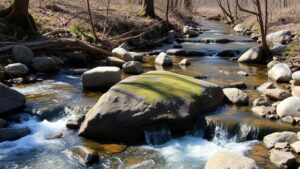The Basics of Gold Panning: Tips for Beginners
The Basics of Gold Panning: Tips for Beginners
Gold panning is one of the most accessible and enjoyable ways to experience the thrill of prospecting. Not only does it allow individuals to forage for precious metals, but it also connects people to nature and history. For beginners, understanding the fundamental techniques, equipment, and locations for gold panning is crucial to maximize the experience. This article will explore these essential elements to help new enthusiasts get started in this rewarding hobby.
Understanding the Equipment
Before venturing into the wild, its important to acquire the right tools. The primary equipment for gold panning includes:
- Panning Pan: Usually made from plastic or metal, this shallow, flat-bottomed pan is essential for separating gold from other materials.
- Sluice Box: For more advanced panning, a sluice box can help in processing larger quantities of sediment.
- Shovel and Trowel: These tools assist in digging and gathering sediments from the riverbed.
- Classifying Screens: These allow you to sort through materials by size, separating larger rocks from finer sediment.
- Gold Vials: Used to store and transport any gold flakes or nuggets you might find.
New panners can find these tools at outdoor supply stores, online retailers, or even local prospecting clubs.
Choosing a Location
Selecting the right site for gold panning is critical. Ideal locations are areas known for past gold deposits and active waterways. Key considerations include:
- Historical Sites: Research areas that have recorded gold finds, such as Californias Sierra Nevada or Alaskas rivers.
- Geological Features: Look for places with crevices, rocky outcrops, or bends in the river where gold could be trapped.
- Legal Considerations: Always check local regulations and obtain necessary permits before prospecting on public or private land.
Online resources, such as the Bureau of Land Management (BLM) or state geological surveys, can provide valuable insights into good panning locations.
Mastering the Technique
Once equipped and in the right location, beginners should focus on honing their panning technique. The basic steps are as follows:
- Gather Material: Use your shovel to scoop sediment from the riverbed. Aim for areas where water flows fast, as this could gather more material.
- Fill Your Pan: Place the sediment in your pan, filling it about a quarter full to avoid overflow during the panning process.
- Submerge and Shake: Submerge the pan in water and shake it back and forth, which will help settle the heavier gold at the bottom.
- Washing Off Lighter Material: Tilt the pan at an angle and gently wash off the lighter particles, which will allow the heavier gold to remain.
- Inspect the Pan: Continue rinsing and shaking, checking for any gold flakes or nuggets among the remaining materials.
Practice is key; even experienced panners emphasize that repetition is vital for improving efficiency and success rates.
Safety and Environmental Considerations
Engaging in gold panning also comes with responsibilities. Beginners should always consider safety and environmental impact:
- Protective Gear: Wear gloves and boots to prevent injuries, especially in slippery riverbeds.
- Respect the Environment: Avoid disturbing wildlife and follow the principle of leave no trace by minimizing your impact.
- Water Safety: Be mindful of swift currents; always ensure you are panning in safe areas and know the depth of the water.
By adhering to these guidelines, beginners can enjoy their pursuit while protecting the natural world.
Real-World Examples
Many gold panning enthusiasts have shared stories of their first experiences, which can serve as inspiration. For example, a popular case study involves a family who visited the American River in California during the summer. They came equipped with pans and spent hours testing different locations near historical mining sites. found small flakes of gold, which provided not only a tangible reward but also a memorable family bonding experience. Such stories highlight the potential for connection, enjoyment, and discovery that gold panning offers.
Conclusion and Actionable Takeaways
Gold panning is a fascinating and accessible hobby for anyone interested in nature, history, or adventure. By obtaining the right equipment, choosing suitable locations, mastering basic techniques, and adhering to safety guidelines, beginners can enhance their likelihood of success and enjoyment. Remember, the thrill of prospecting lies not only in the find but also in the journey itself. Embark on your gold panning adventure today, and you may uncover not just gold, but unforgettable experiences.


